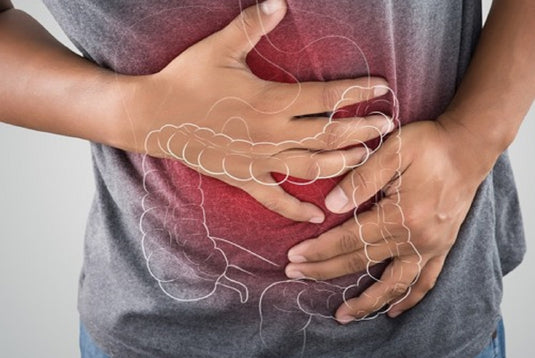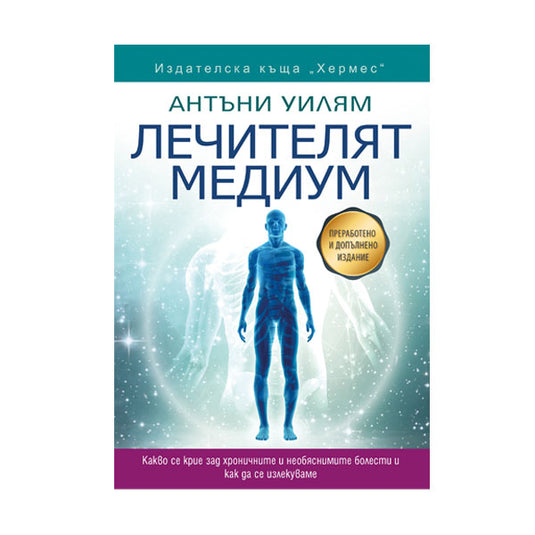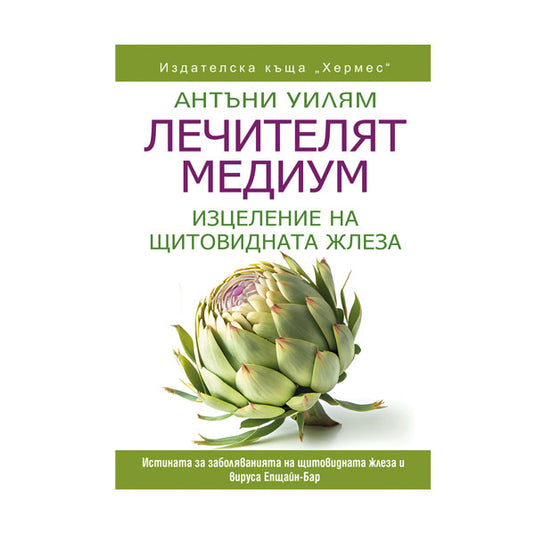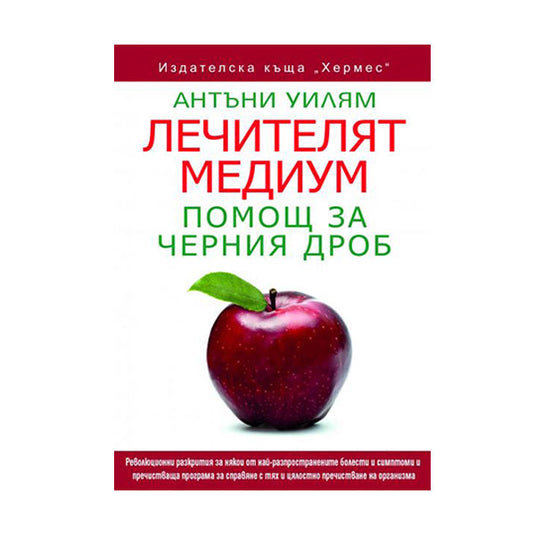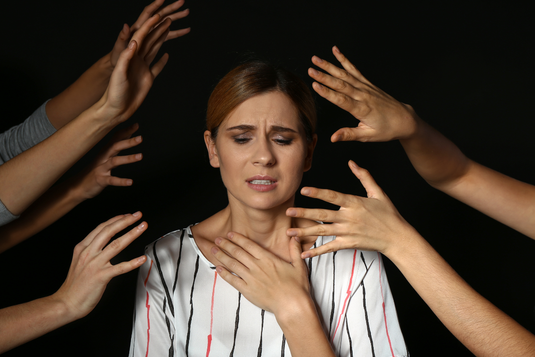As we have already explained, thyroid diseases themselves are not symptomatic to the extent that experts believe – they are not really the problem. They are just a signal, a clue, a piece of the puzzle of the much bigger picture that is the Epstein-Barr virus (EBV). (To learn more about the connection between EBV and the thyroid, read the article “Thyroid Diseases - How It All Begins” .) For this reason, in the list we will consider, all thyroid disease diagnoses are included as symptoms of this virus. At first glance, this may seem surprising. When you realize the big picture, you will understand why it makes sense.
This list also includes health problems that are more familiar to you, such as memory loss, fluctuating body temperature, chills, night sweats, and heart palpitations. As you’ll see, these are almost always symptoms of EBV . While some of these symptoms can have other explanations (for example, muscle cramps can also be the result of a nutrient deficiency, or you might get a mild fever from severe dehydration), if you’ve come across this article looking for a specific thyroid problem or are experiencing multiple issues on this list, there’s a good chance that the explanation for a specific symptom below describes what’s happening to you. Before you read on, there’s something important to keep in mind: what you’ll find here won’t be misleading theories or standard explanations with unhelpful information. You’re about to enter new territory in terms of what causes a given symptom or condition.
Hypothyroidism
Hypothyroidism is a mild, early stage of thyroiditis (inflammation of the thyroid gland). When EBV burrows into the thyroid tissue, it becomes damaged and scarred, making it difficult for it to function. In this weakened state, also called an underactive thyroid or hypothyroidism, there is a risk of reduced and less effective production of the thyroid hormones T3 and T4. Hypothyroidism can cause body temperature fluctuations, some fatigue or mild lethargy, and dry skin—that’s about it. What about all the other symptoms that are commonly associated with low thyroid hormone levels? They are symptoms of EBV ravaging the liver and other parts of the body while also infecting the thyroid gland, not actually symptoms of low thyroid hormone levels.
Even congenital hypothyroidism, when a child is born with an underactive thyroid, is a result of EBV. While developing in the womb, the baby is at risk of infection just as much as we are, and a mutated strain of the virus can get into the baby's liver or thyroid gland, causing thyroid problems from birth.
Hypothyroidism would be more devastating if it weren’t for the adrenal glands (for more on the thyroid-adrenal relationship, read “The Truth About the Thyroid” ). Medical research and science have yet to discover that the adrenal glands produce a hormonal blend to compensate for the reduced T4 and T3 – a blend that is similar to thyroid hormones, though different enough that those few symptoms we just mentioned can sneak in. If the adrenal glands weren’t doing their job, the low T4 levels from hypothyroidism would cause irregular periods, lack of motivation, higher levels of apathy, and feelings of sadness, which are still not among the “classic” symptoms that are (incorrectly) associated with hypothyroidism. Again, these “classic” symptoms are viral or virus-related.
When you have hypothyroidism, it doesn't automatically mean that the entire gland has capitulated. Much of the thyroid is still functioning normally. It takes real damage to the thyroid gland that completely disrupts its inner workings to really bring it down. You may think that's the case with you. If so, keep in mind that it's very rare for a hypothyroid gland to cause real symptoms. It takes a combination of physical injury to the thyroid gland (like choking or a hard blow to the throat), major trust issues, a tragic loss in life, and tons of stress to destroy the spirit of the thyroid gland. (If you're one of those extremely rare people, don't lose hope; you can still recover.) In the vast majority of people, the thyroid gland, no matter how damaged, is able to continue doing its job of monitoring the body. Additionally, the rest of the body is able to step in and compensate for the low hormone production, and the result is that any symptoms you experience are viral.
Hyperthyroidism and Graves' disease
In some cases, instead of causing an underproduction of thyroid hormones, EBV causes the thyroid gland to overproduce them. This is called hyperthyroidism, and the diagnosis that many people with this symptom receive is Graves' disease, a condition that is classified as autoimmune and leaves too many patients feeling like their body has betrayed them. This couldn't be further from the truth. Graves' disease is not the result of a mistaken immune system attacking the thyroid gland.
Rather, Graves' disease and hyperthyroidism occur because a certain strain of EBV—a bit more aggressive and fast-moving than the strains that cause hypothyroidism—attacks the thyroid gland, prompting it to overproduce, rapidly creating new cells and tissue. This extra thyroid tissue produces extra thyroid hormone, leading to symptoms like bulging eyes, an enlarged thyroid gland, a swollen throat, some fatigue, and temperature fluctuations. As with hypothyroidism, most of the symptoms associated with Graves' disease (such as sweating, high blood pressure, and nervousness) are related to the virus, not a direct result of an overactive thyroid.
Although rare, it is possible to be diagnosed with hyperthyroidism along with Hashimoto's thyroiditis rather than Graves' disease. This is because a person can carry two strains of EBV at the same time, one that speeds up the growth of cells and tissues, and the other that is destructive to thyroid tissue. This can easily cause large fluctuations in thyroid hormone readings, as one strain of the virus may be more active in a person's body at a given time, determining whether the thyroid gland is producing too much or too little hormone.
Inflammation, enlarged thyroid, and Hashimoto's thyroiditis
When EBV targets the thyroid gland, the immune system goes into overdrive, and the result is inflammation. Inflammation is the body’s natural response to invasion and/or injury. Have you ever had a thorn stuck under your skin and then the skin around it became red, hot, and swollen? This is how the body responds to a foreign object (invasion) that causes cell damage (injury). The same goes for the thyroid gland. If EBV gets into the tissue of the thyroid gland, the immune system immediately learns of its presence (invasion), and as the cell damage (injury) begins, the gland becomes inflamed. This inflammation is characterized by a sore throat, pressure when swallowing, or a strange feeling in the neck. It can also lead to an enlarged thyroid gland. You can also have an inflamed thyroid without any symptoms, because every person is different and every case of inflammation is different. It all depends on which part of your thyroid gland is inflamed – whether it's the front, back, top, bottom, or both sides – and how inflamed it is.
If you are diagnosed with thyroiditis, understand that this is a sign that your immune system is working hard for you, doing everything it can to fight off the virus. This is not a malfunction of your body. The inflammation does not occur because your immune system is producing "auto-antibodies" to attack your own cellular tissue. The antibodies that show up on thyroid tests are there because there is a battle going on in your thyroid between EBV cells and your immune system. That is, your immune system is producing antibodies to seek out and destroy the Epstein-Barr virus that is causing damage or inflammation in your thyroid.
Let's think for a moment about the name "Hashimoto's thyroiditis." While it may seem long and scary and panic-inducing to you, if you look at it in parts, it loses some of its scary face. Thyroiditis simply means inflammation of the thyroid gland, and Hashimoto's is nothing more than the name of the doctor who first identified the swelling of the thyroid gland in his patients. While this was a remarkable discovery at the time, it was not a grand revelation about what was behind the inflammation. Rather, the doctor felt his patients' necks, identified the swelling of the thyroid gland by touch, realized that iodine deficiency did not fully explain the problem, and said to himself, "Something is wrong here!" - although he did not determine what. The diagnosis only names the symptom of the inflammation, but not the underlying cause. These initial cases of Hashimoto's were actually the first cases of EBV (after it had gone from being a "good" virus to our enemy) taking advantage of iodine deficiency and a weak immune system. If "Hashimoto's" is starting to sound like a scary diagnosis to you, remember that the discovery was made over a century ago. Now is the time to take the next step and find the answers.
It was only after the publication of Anthony William's first book , "The Medium Healer: What Lies Behind Chronic and Mysterious Illnesses and How to Heal Them," which includes a chapter on hypothyroidism and Hashimoto's disease, that the truth about EBV as the real, underlying cause finally reached the public. It's time to take back your power and understand that Hashimoto's disease is simply a diagnosis, not a life sentence. The cause of your suffering does not come from within. Your immune system has not gone haywire and is out to kill you. It's this virus that is causing damage, making you miserable, and impeding your normal life. Your body simply needs the proper support to defeat the virus.
Thyroid nodules, cysts, and tumors
If you've ever been diagnosed with a thyroid nodule or cyst, the diagnosis has probably been disconcerting. After all, none of us want to hear about having a growth, much less one that mysteriously appears with no answer as to how to make it go away. Here's the truth about these growths: They're another sign that your body is working hard to fight off the Epstein-Barr virus .
When the immune system is unable to completely destroy the virus, it uses an alternative: it tries to build calcium walls in front of the virus. These are the nodules of the thyroid gland – calcium walls in front of the EBV cells. Unfortunately, this does not eliminate the virus because (1) most EBV cells escape the enclosure and (2) those EBV cells that get trapped lodge in the calcium walls, continuing to feed on the thyroid gland and exhaust it. If the viral cells grow too much in the nodule, they can turn it into a living growth – a cyst – which puts even more strain on the thyroid gland. It is also possible to get a keloid scar on the thyroid gland, although doctors will not identify it as such. These keloids form when EBV creates extra tissue at the site of damage to the thyroid gland, whether from an external impact or from the virus itself.
If you have had larger thyroid tumors that are cancerous, know that they are caused by rare, specific strains of EBV. Their formation usually indicates that a person also has toxins, such as elevated levels of heavy metals and pesticides in their organs. (For more information on thyroid cancer, stay tuned for a special article on the topic on our blog .)
Meanwhile, all that calcium that surrounds the virus has to come from somewhere. If a person with a thyroid nodule or cyst doesn't have enough calcium in their body because they're not eating enough calcium-rich foods, then the immune system will pull calcium from the bones, which can lead to osteopenia or, worse, osteoporosis. Don't be fooled when you hear that thyroid problems cause osteoporosis. When hypothyroidism and bone density problems occur at the same time, it's because EBV is behind both. For information on how to counteract calcium loss with the right foods, see the article "Powerful Thyroid Healing Foods."
The continuation of the article with an explanation of many more symptoms: "Thyroid Diseases - Explaining Your Symptoms (Part 2)" .
The article uses materials from Anthony William's book "Healing the Thyroid" . Coming soon to our blog, more articles on the topic!
Other articles about the thyroid gland:
“The truth about the thyroid gland” ;“Thyroid Diseases – How It All Begins” ;
“Thyroid Diseases – Explaining Your Symptoms (Part 2)” ;
“Thyroid Diseases – Explaining Your Symptoms (Part 3)” ;
“Thyroid Diseases – Additional Complications (Part 1)” ;
“Thyroid Diseases – Additional Complications (Part 2)” ;
“Thyroid cancer” ;
“[Video] Do you have Hashimoto's thyroiditis? – Anthony William speaks” ;
“Anthony William on insomnia and sleep problems in thyroid diseases” ;
“Anthony William's Tips for Treating Sleep Problems and Why Bad Dreams Are Good” ;
“Why are women more susceptible to thyroid diseases” ;
“Healer Medium's 90-Day Thyroid Therapy (Part 1)” ;
“Healer Medium's 90-Day Thyroid Therapy (Part 2)” ;
“The “divination tests” for the thyroid gland” ;
“Anthony William on Thyroid Medications” ;
“Anthony William on life without a thyroid gland” ;
“Anthony William reveals the truth about iodine” ;
“Anthony William reveals the truth about zinc” ;
“Powerful Healing Foods for the Thyroid” ;
“Which foods to avoid with thyroid diseases” ;
“Herbal remedies and nutritional supplements for the thyroid gland” ;
“How celery juice helps with thyroid disease” ;
“Tea for treating the thyroid gland” ;
“Leben Broth for the Thyroid” ;
“Healing juice for the thyroid gland” ;
“Healing smoothie for the thyroid gland” .


